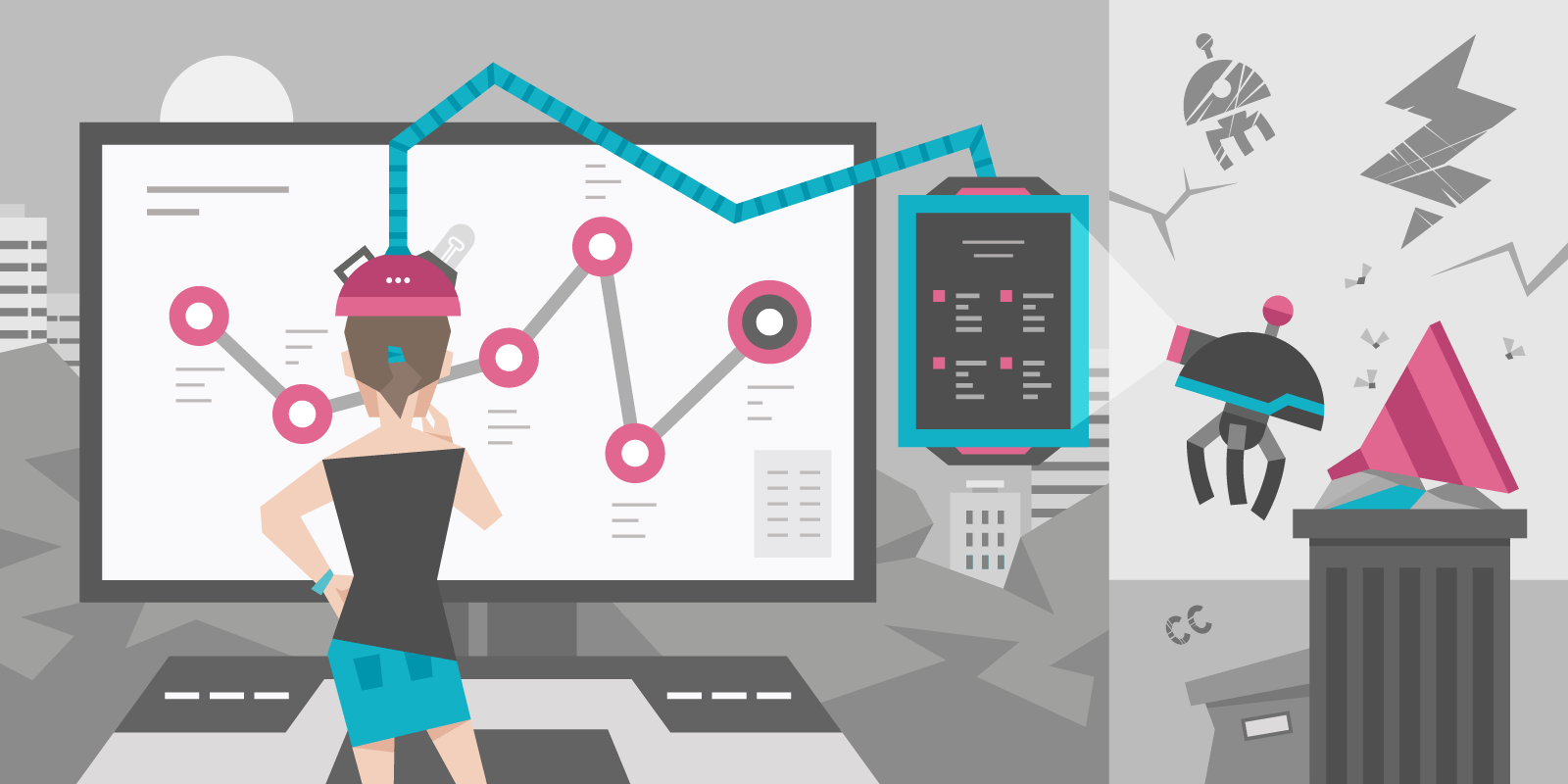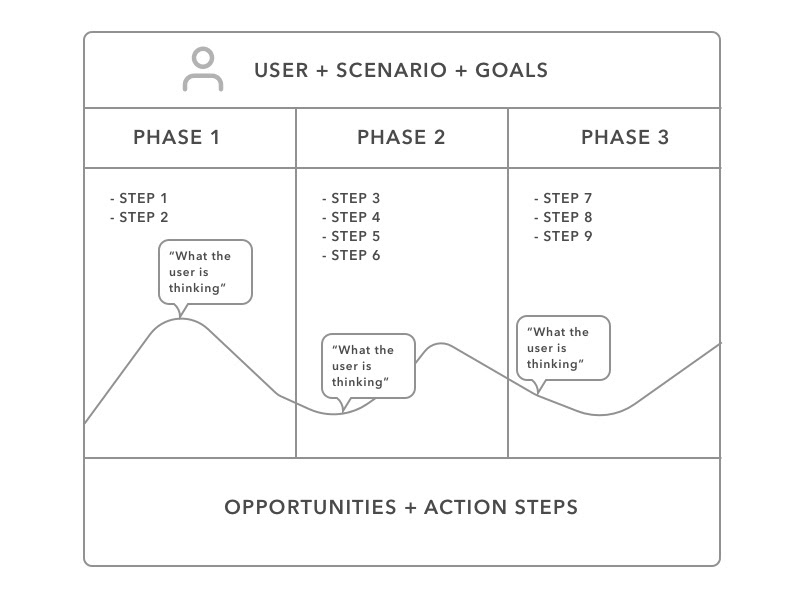
How to create a user journey map
Learning about your user journey map will help you understand your customer experience, and how it is interconnected with your success.
Day 3: Why funnels “suck”
You’ve probably heard about conversion funnels.
Everyone has got their own secret formulas and tactics, using this or that tool. And a lot of business owners, after seeing other people’s success, want to jump on the funnel train.
They read a cool article about a convoluted webinar funnel template that promises them the untold riches if you do just as they say — and then they wait for the dollars to start rolling in.
Our opinion? Good luck with that.
We’ve always been about principles rather than tactics. If there’s one principle in Conversion Rate Optimization that you should always keep in mind, it’s this: the user comes first.
In this post, we’ll talk about how you can use this principle to focus your funnel on your users, rather than on your greedy lust for conversions. Trust us, it’s a much better way of doing things!
Enter user journey maps
A user journey is nothing but the path a user follows from realizing they have a problem, to buying from you. User journey mapping is the way you visually represent her relationship with your brand so you can improve it. Think of a user journey map as your customer’s story.
Here’s what a typical user journey map looks like: This is a very simple visual representation of your user journey, but an effective one. The map is composed of:
This is a very simple visual representation of your user journey, but an effective one. The map is composed of:
- User: this is your target customer (you may know them as a persona, or avatar). Think of it as the point of view you’re using to tell the story. You can build as many of these as target customers you have.
- Scenario: the situation you will address on the map. It can be a sequence of events (shopping, researching for a trip etc.); it can describe a process; and it can involve multiple channels (social media, ads, email…). However, the most useful user journey map will focus on one specific scenario that you want to understand.
- Goals and expectations: your user’s goal and what she expects from it.
- Phases: the different touchpoints or high-level stages the user experiences when she interacts with your business. For an ecommerce site these can be discovery, research, purchase, delivery and after-sales. Touchpoints can be associated with different channels (we have three here, but they can be as many as you need).
- Steps: the main actions the user takes in a particular phase (searches on Google, clicks on Ad etc.)
- Mindsets (bubbles): your user’s thoughts, questions and motivations at different key points during the journey. PS. Use real verbatims from actual customers for added clarity.
- Emotions: the curved line you see across the map represents the emotional ups and downs the user experiences. This is helpful for empathizing with your user. Focus on the low points for the biggest wins in user experience.
- Opportunities and action steps: this is where you’ll gather your takeaways from analyzing the journey map. It’s also useful to assign different responsibilities to your team members.
“This is all great”, you might think, but why exactly do you need to do all this work?
Why you need a user journey map

You’ll make sure your business goals are aligned with your customers’ success
Remember your North Star we talked about in the last post? A user journey map helps you synchronize your business goals with your customers’ needs. Each phase or step should be aligned with a goal and its relative KPI. This is also a great way to see where you need to restructure or simplify your touch points so the user has a seamless experience.
You’ll get an overview of your customer’s experience
This is especially helpful if you’re a manager (or report to one). Executives often don’t have a clear picture of how the customer moves along the entire conversion funnel. This is a great opportunity to make it clear and relevant to your business’ goals.
You’ll identify the gaps
Whether it’s gaps between devices (mobile or desktop), between different departments (sales or support), or between channels, this map will draw attention to issues so you can fix it.
You’ll narrow down on a specific target audience (and problem)
A user journey map is about one user and one scenario (usually your primary target audience and the buying experience). Researching your customer’s pain points and mapping them out this way will give you a pretty good idea of who your users are and how you can manage their needs. When you integrate this with your quantitative research and KPIs, you’ll be able to make better strategic decisions.
You’ll get context
Instead of focusing on tactics like SEO, PPC and social media without knowing the broader context of why you need to do it, a user journey map will shed light on that context. It will also help your organization understand the user from their own perspective, something that many companies lose sight of (when they immerse themselves too deeply in their product).
It’s time you do this work upfront so you can reap the benefits later.
It’s time for your first free resource. We’ve prepared this template for you to save you the time it took us to write it! No frills, no fanciness, this is a quick and dirty, exactly-what-you-need user journey map. Enjoy it.
Start by asking yourself “What business goal does this journey map support?”, “Who is it about?” and “What experience does it address?”
Fill in your user’s hypothetical name, the scenario and their expectations. Replace the steps at the top with the phases of your buyer’s journey, answer the questions for each column and, after analyzing the data, jot down your takeaways.
Something we recommend (especially the first time) is to try this exercise yourself. For each user/avatar, go through their experience from start-to-finish: searching a keyword on Google, visiting the homepage, subscribing to your newsletter and navigating back to your site’s homepage. It will help you build empathy towards your users.
For additional oomph, collaborate with your team as much as possible.
Most importantly, you’ll learn something invaluable: that you don’t know your users as well as you thought. This is where the research work we’re going to look at later in the course will come in handy (and when you’ll get back to this!).
Your homework
Use your journey map’s takeaways and findings to decide which page in your conversion funnel needs the most attention (and that you’ll optimize during the course).
